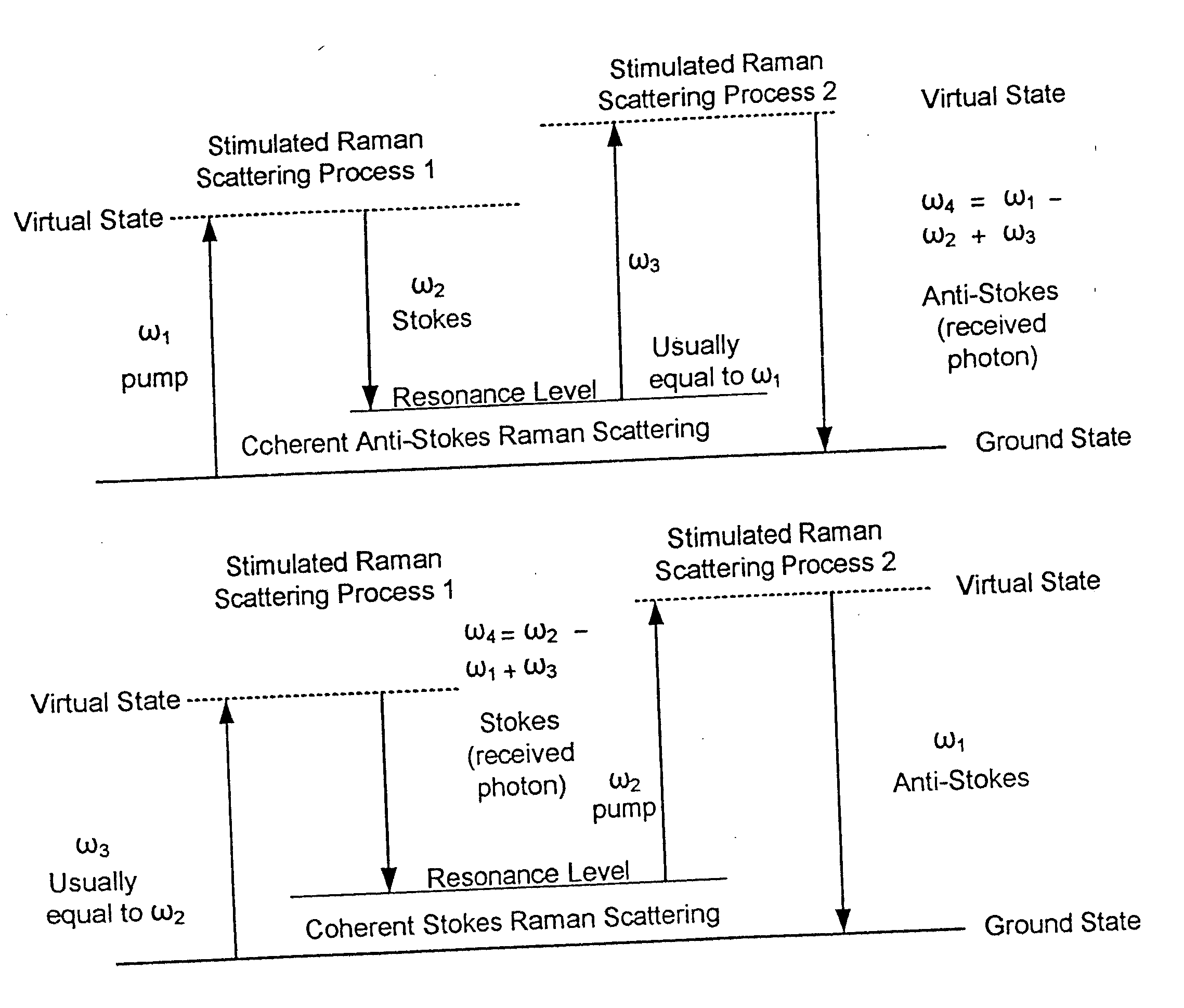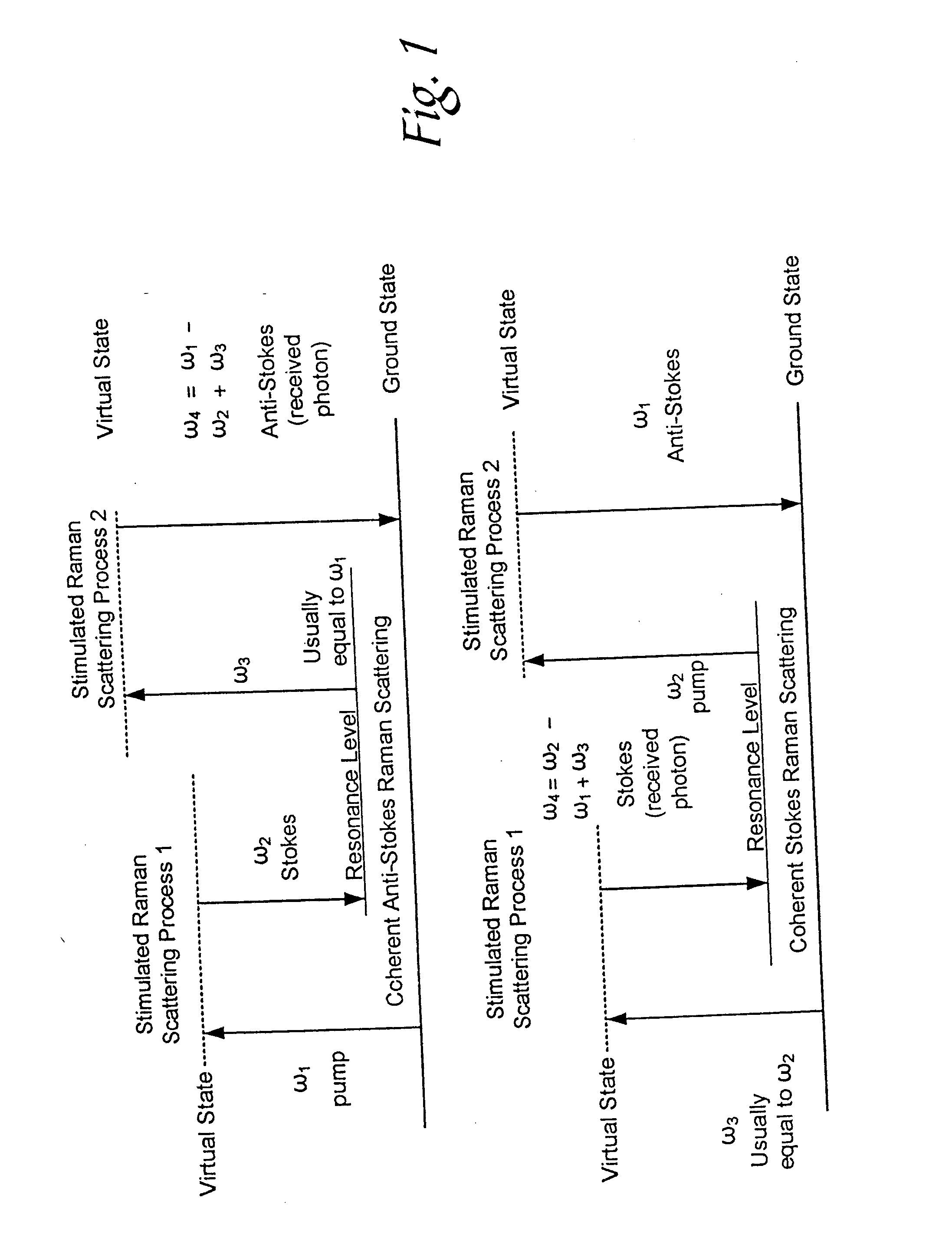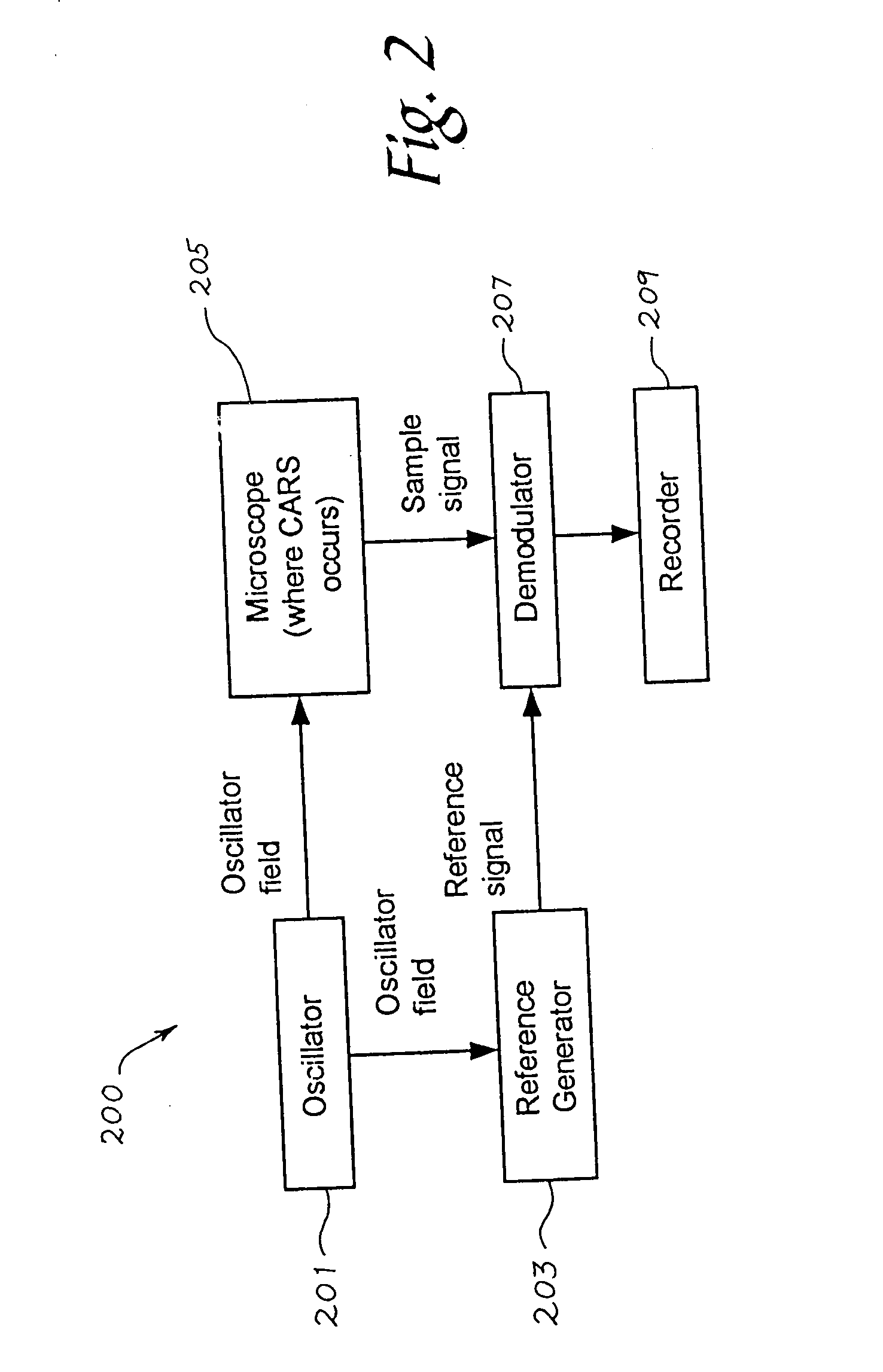Nonlinear interferometric vibrational imaging
a vibration imaging and interferometer technology, applied in the field of nonlinear interferometer vibration imaging, can solve the problems of exposing the patient to ionizing radiation, limited in practice to a resolution over 100 microns, and high cost of diagnostic tools
- Summary
- Abstract
- Description
- Claims
- Application Information
AI Technical Summary
Problems solved by technology
Method used
Image
Examples
embodiment
[0105] Randomness introduced into the measurement process may produce false positive indications of molecular densities, or obscure weak concentrations of molecular densities. This randomness has three sources: fluctuations in the oscillator, vibrations and air currents, and noise introduced by the photodetector.
[0106] Oscillator fluctuations are the hardest to characterize because the feedback mechanism of laser sources can produce large variations in the frequency, bandwidth, and output power of the pulses even for small perturbations of the oscillator. In addition, nonlinear processes such as self-phase-modulation, self-focusing (Kerr lensing), or continuum generation may also affect the pulse in ways that are sensitive to the power in the pulse. Therefore, it is desirable to keep fluctuations in pulse energy below a few percent, and keep frequency and bandwidth fluctuations under one percent.
[0107] Well designed state-of-the-art Ti-sapphire oscillators and regenerative amplifi...
PUM
| Property | Measurement | Unit |
|---|---|---|
| wavelength | aaaaa | aaaaa |
| time scales | aaaaa | aaaaa |
| wavelength | aaaaa | aaaaa |
Abstract
Description
Claims
Application Information
 Login to View More
Login to View More - R&D
- Intellectual Property
- Life Sciences
- Materials
- Tech Scout
- Unparalleled Data Quality
- Higher Quality Content
- 60% Fewer Hallucinations
Browse by: Latest US Patents, China's latest patents, Technical Efficacy Thesaurus, Application Domain, Technology Topic, Popular Technical Reports.
© 2025 PatSnap. All rights reserved.Legal|Privacy policy|Modern Slavery Act Transparency Statement|Sitemap|About US| Contact US: help@patsnap.com



